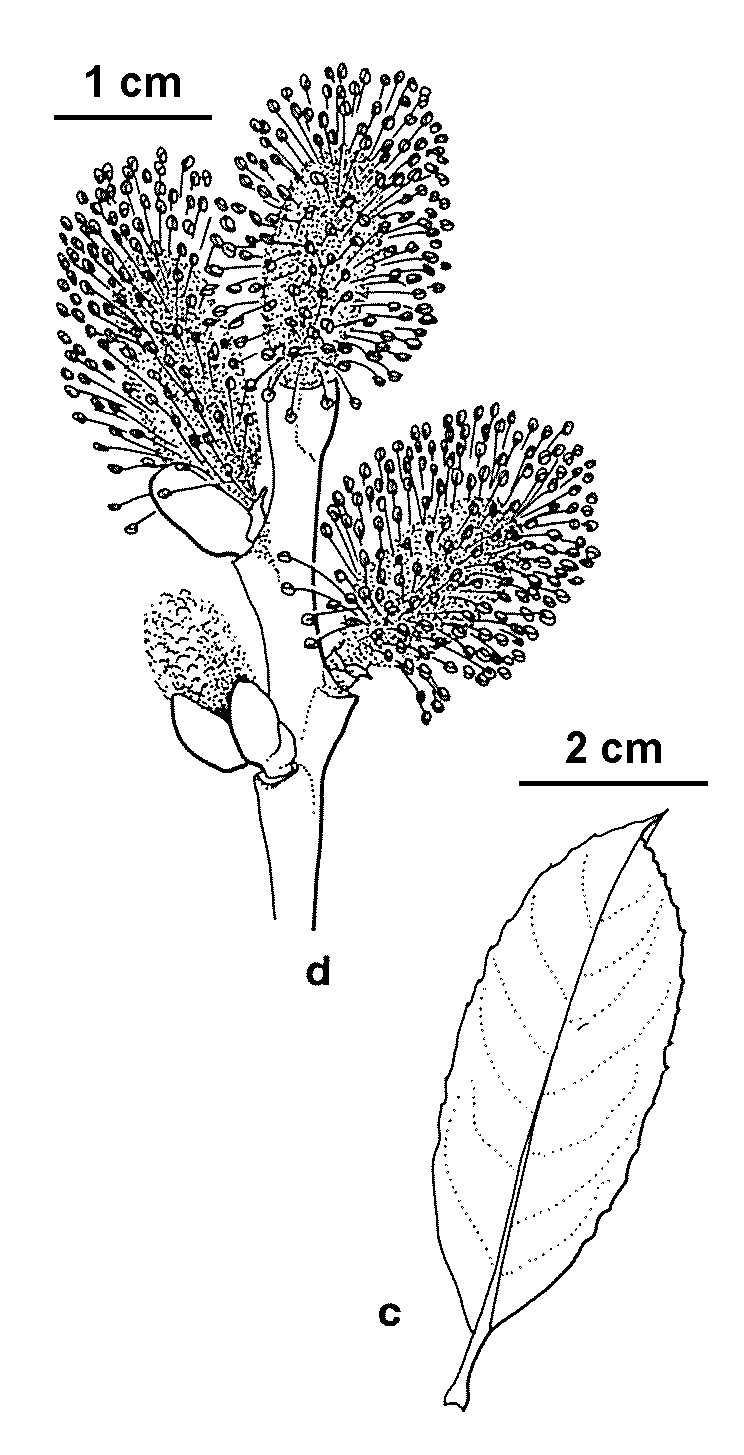Salix cinerea subsp. oleifolia
(Sm.) Macreight Rusty SallowMulti-stemmed, usually dome-shaped shrub to 8 m or more high with rigidly erect outer branches; wood weakly to strongly striate; twigs mostly dark reddish-brown; buds initially densely pubescent, becoming glabrescent and somewhat shiny. Leaves oblanceolate to narrowly oblong, 2.5–7.7 cm long, 1.5–3.5 cm wide, lustrous dark green above, slightly bullate, ultimately virtually glabrous except on veins, underside grey-glaucous, sparsely tomentose with short sparse, subappressed, more or less crisped hairs, rust-coloured hairs scattered on and between the veins, especially toward apex; margins weakly to strongly glandular-serrate, usually undulate. Fruit not seen. Flowers Aug.–Oct.
CVU, HSF, HNF, Strz, VAlp. Also naturalised NSW, Tas. Native to Europe. Known habitat like that of subsp. cinerea, but poorly collected and so far known from low altitudes; apparently most abundant around Ballarat and Sale.
Some specimens while agreeing with all other characters of subsp. oleifolia, lack rust-coloured hairs on the leaf undersurface; they may represent hybrids with subsp. cinerea, as apparently occur in New Zealand (Webb et al. 1988).
Salix ×calodendron Wimm. (a hybrid of S. caprea L., S. cinerea subsp. oleifolia and S. viminalis L.) of Britain and western Europe, an erect multi-stemmed shrub or small tree to 12 m high, has been planted for stream stabilization in the catchment of the Ovens River and may be naturalized. It has striated wood; densely pubescent twigs and shoots; and entire leaves which are prominently petiolate, ovate to oblong-elliptic, to c. 10 cm long and 5 cm wide, dull and thinly pubescent above, and glaucous-pubescent beneath. Only female plants are known (it apparently does not produce seed) and the catkins, to c. 7 cm long, are densely long-sericeous. It is naturalised in New Zealand (Webb et al. 1988).
Carr, G.W. (1996). Salix. In: Walsh, N.G.; Entwisle, T.J., Flora of Victoria Vol. 3, Dicotyledons Winteraceae to Myrtaceae, pp. 387–398. Inkata Press, Melbourne.
 Spinning
Spinning